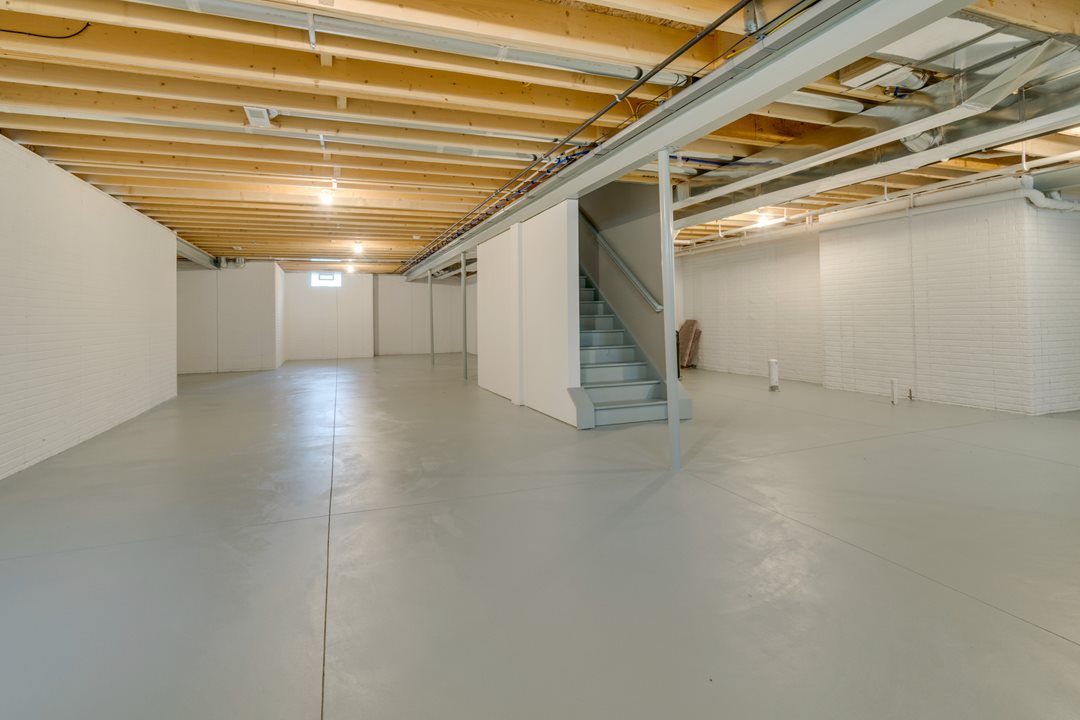Five things not to keep in an unfinished basement | PEMCO
 While basements aren't as common in the Northwest as they are in some parts of the country, many older neighborhoods in Washington and Oregon do include homes with basements. If you're lucky enough to find one, make sure you know the best way to use it (and how to keep it safely maintained!).
While basements aren't as common in the Northwest as they are in some parts of the country, many older neighborhoods in Washington and Oregon do include homes with basements. If you're lucky enough to find one, make sure you know the best way to use it (and how to keep it safely maintained!).
Unfinished, minimally heated basements can be prone to dampness. When it comes to storage, you'll want to take steps to proactively prevent damage before it starts, beginning with what not to keep down there.
Five things to not store in your basement
- Books, photographs, artwork or important documents. Humid, poorly ventilated environments degrade paper, leading to mold, mildew, fading, and pages sticking together. An added "ick factor?" Insects. They're attracted to paper, including cardboard storage boxes, as a cozy home and food source. And even reliably dry basements can fall victim to burst pipes that ruin whatever lies below them.
- Electronics. Over time, moisture can damage sensitive electronic components, meaning while the outside may look fine, rust inside may ruin your stored game system, microwave, stereo, TV or small kitchen appliances.
- Musical instruments. Be especially careful with wind instruments (that you'll be putting up to your mouth) because of unseen interior mold growth.
- Upholstered furniture and mattresses. Because of the potential for mold and mildew growth, time spent in a damp basement can render upholstered items unusable. Even with no visible signs of mold or mildew, upholstered cushions can take on musty basement odors that are practically impossible to shake.
- Grains and other semi-perishable foods. That includes rice, cereal, snack foods, and bags of pet food that can draw moisture and spoil. Food in paper or plastic bags also can invite insects and rodents.
Five things you can store in your basement
- Outdoor seasonal items. Keep your patio set protected during the off season, as well as holiday displays (with batteries removed), sports equipment, lawn sprinklers, and gardening tools.
- Washable off-season clothes and linens. Place clean and fully dry clothes in vacuum-sealed bags along with a silica gel desiccant pack to absorb moisture. To re-fluff, wash before you need to use them. That also will take care of any "basementy" smell they've developed.
- Canning jars. Empty glass jars take up a lot of cupboard space, so they're perfect for basement storage until canning season rolls around again (if you're into that sort of thing).
- Buy-in-bulk supplies. Those wholesale store quantities of zipper bags, laundry soap, and more all can be safely stored in the basement.
A key to success
Keep everything up on shelves and slightly away from walls so it won't draw moisture from the concrete or get damaged in case of minor flooding. Rely on plastic, rather than cardboard storage boxes, and periodically check rarely moved boxes to make sure they haven't become a home for insects or rodents.
Tips for minimizing basement moisture
Besides leading to mold, rot, and insect problems, persistent dampness can accelerate settling and cracking of your foundation. All are considered maintenance-related problems typically not covered by homeowners insurance.
Basement moisture comes from condensation, leakage, or both. Generally, condensation is easiest to fix. Solutions may include eliminating sources of moisture like improperly vented clothes dryers and plumbing leaks; adding exhaust fans and dehumidifiers, and improving air flow (getting rid of clutter and moving boxes off the floor can help). If you notice moisture during warm weather, condensation may be to blame.
Leaks can be trickier to treat, but simple fixes often yield big gains. You may need a combination of steps:
Control surface water
- Make sure downspouts channel water away from your foundation. Install extenders if your downspouts discharge next to the house.
- Keep gutters clean and in good repair.
- Consider adding covers to window wells and outside stairwells to deflect rainwater.
- Regrade your landscape so water flows away from your house. Standing water in the yard acts like a "reservoir" for your basement. Driveways and paths should slope away, too.
With a few practical steps and preventative measures taken around your house, hopefully your basement stays dry and keeps your belongings safe for years to come.
Share on social media